Since its establishment the DMZ has remained terra nullius, only open to non-humans, apart from occasional local military crashes. As the recent designation of the DMZ as a UNESCO biosphere reserve illustrates, this product of Cold War conflict is now widely recognized as a haven for endangered animals and plants. In his research, Postdoctoral Fellow Jaehwan Hyun examines how environmentalism, science, and geopolitics became intertwined by the military-supported fieldworks during the Cold War, enabling a new ecological vision for the DMZ.

The Map of Korean Demilitarized Zone. Source: Central Intelligence Agency, “Korea Demilitarized Zone” (CIA: Washington, D.C, USA. 1969).
A Complicated Relationship
The opportunistic triumph of non-humans in this military landscape has been a central concern for environmental historians, political geographers, and anthropologists, who ask how the Cold War shaped the environment and changed human-animal relations in the DMZ. Focusing on scientific activities within and near the borderland—using oral history interviews with local scientists and archival sources collected from private libraries and US official archives—shows that the way in which humans encounter animals, the environmental meaning of the DMZ, and the relationship between the military buffer zone and geopolitics are more heterogeneous and complicated than previously thought.
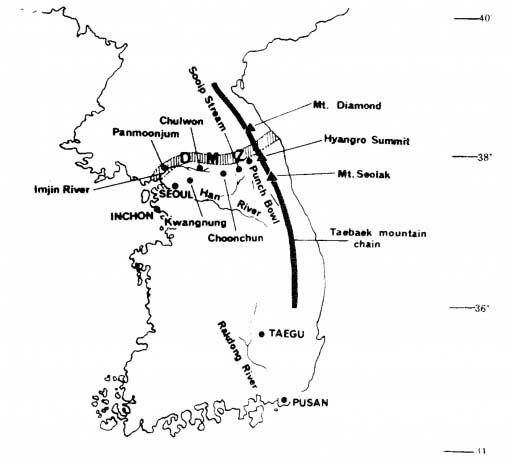
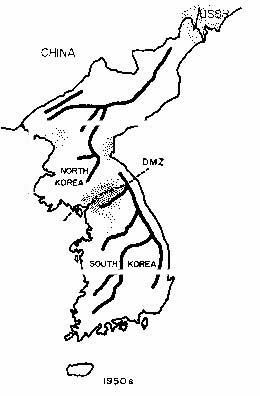
The DMZ and other places related to the national park planning surveys (left) and the distribution of the Korean hemorrhagic fever in the DMZ and other areas in the 1950s (right). Source: Yung Sun Kang, “Present Activities of IBP in Korea” in Svuiti Mori and Tatuo Kira eds., Proceedings of the East Asian Regional Seminar for the International Biological Programme (Kyoto: Japanese National Committee for the IBP, 1973) and Ho Wang Lee, “Korean Hemorrhagic Fever” in S.R. Pattyn ed., Ebola Virus Haemorrhagic Fever (New York: Elsevier/North-Holland, 1978).
Varying Approaches to the DMZ
Ecologists, medical zoologists, and national park planners began to investigate the vegetation and fauna in the borderland early on in the Cold War period. Although they were involved with the United States’ military, their research aims and structures varied: ecologists, for example, understood the border as a closed ecosystem and planned to control the vegetation for military surveillance, while medical zoologists focused on monitoring the trans-border mobility of rats and other animals that posed a risk of contagious disease in US and South Korean barracks near the DMZ. National park planners, meanwhile, looked for the charismatic “endangered” animals as a means to claim the necessity of national parks within the still-developing country. Animal-human relations were heterogeneous, too: it was asserted that some animals should be protected and others eradicated, and in some cases even members of the same species were designated as needing to be preserved and killed. The rationale for designating the southern part of the DMZ as a national nature reserve eventually came from cranes flying into the zone, which had originally been tracked for the US Army’s Migratory Animal Pathological Survey (1963–73) intended to identify the migration routes of birds and bats, and therefore the ectoparasites that were hosted by the animals.
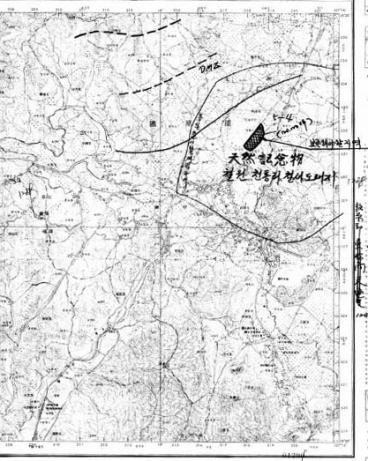
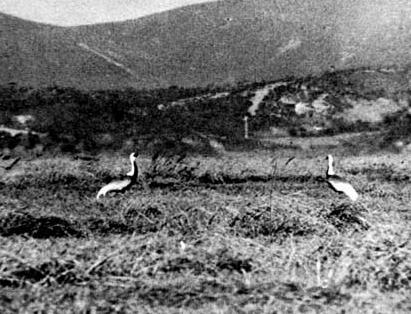
A nature reserve planning map for the Southern part of the DMZ to protect the migratory birds (left) and a picture of cranes in the planned area (right). Source: The Office of Cultural Properties, “The National Monument Designation (the Cholwon Migratory Bird Habitat and Other Regions),” National Archives of Korea, BA0119404, July 1973.
The Rise of Global Environmentalism and the Greening of the “Third World”
By scrutinizing the fieldwork planning and practices of ecologists and national park planners in the 1960s and 1970s, this research also sheds new light on the rise of global environmentalism and its propagation to the “Third World” at the time. Although the idea of sustainable development emerged only after the late 1970s, US national park planners working in developing countries had to negotiate with the developmentalist passion of the local government and scientists. In the mid-1960s, Harold Jefferson Coolidge (1904–85)—the Chairman of National Park Services at the International Union for Conservation of Nature and Natural Resources (IUCN)— developed with American ecologists from the Smithsonian Institution a long-term (albeit unfulfilled) plan for studying the DMZ ecosystem, and for designating the site as a research park. Their first priority in the planning process was to persuade the local government of this need, by claiming that conservation practices and environmental research would be beneficial for their developmentalist efforts. The US scientists and environmentalists could not ignore South Koreans’ passion, given that the US government highly supported the divided country’s economic development to enable it to serve as a showcase for the capitalist West. Local scientists also made efforts to place their environmental research within the five-year national economic development plan. In this respect, the DMZ was an early testing ground for combining environmentalism with developmentalism.
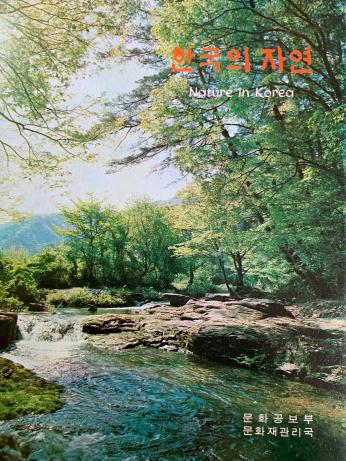
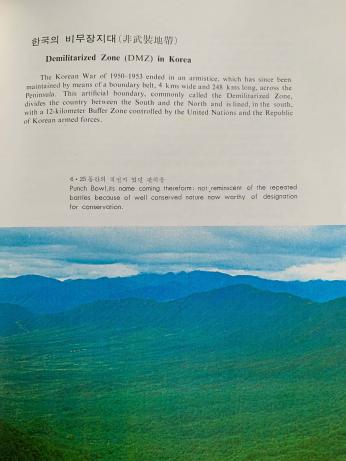
The cover page of the propagandist booklet Nature in Korea (left) and its “DMZ” section (right). Source: The Korean Commission for Conservation of Nature and Natural Resources, Nature in Korea (Seoul: The Bureau of Cultural Property Preservation, Ministry of Culture and Information, 1970).
Tradition, Nationalism, and Nation Building
Ecologists and environmentalists from the US also had to allow the nationalist appropriation of local scientists to the diverse fieldworks. They mobilized the fieldworks to imagine the pristine nature of the nation away from the communist, imperialist, and modernist threats. Since the colonial rule of Japan, South Koreans had developed a mountaineering research tradition that merged leisure activity with natural history surveying to identify national fauna and flora that represented the unique nature of the nation. Under a materialistic and symbolic regime competition with North Korea, local scientists continued the mountaineering-tradition practices through collaborative US-South Korea fieldwork at the DMZ, despite the definition of the project as an “ecological survey.” They searched for national animals and plants, such as tigers and pine trees that were supposed to have been threatened by Japanese colonialism, in the bushes of the DMZ. Neither the financial supporter—the US military—nor the US scientific collaborators were interested in such work, and they sometimes quarreled with the local scientists, blaming the Korean side for being ignorant of ecology and “primitive” naturalists. However, they soon conceded that the South Korean fieldworkers should be allowed to pursue their work: only Koreans could work in the long-term base, and only they possessed local knowledge about the field. Finally, the Korean scientists incorporated the results of field surveys into a government propagandist book, which described the DMZ as a showcase of “the restoration of the Korean nature (Kŭmsugangsan).” This therefore turned environmental cooperation into a means of nation-building.
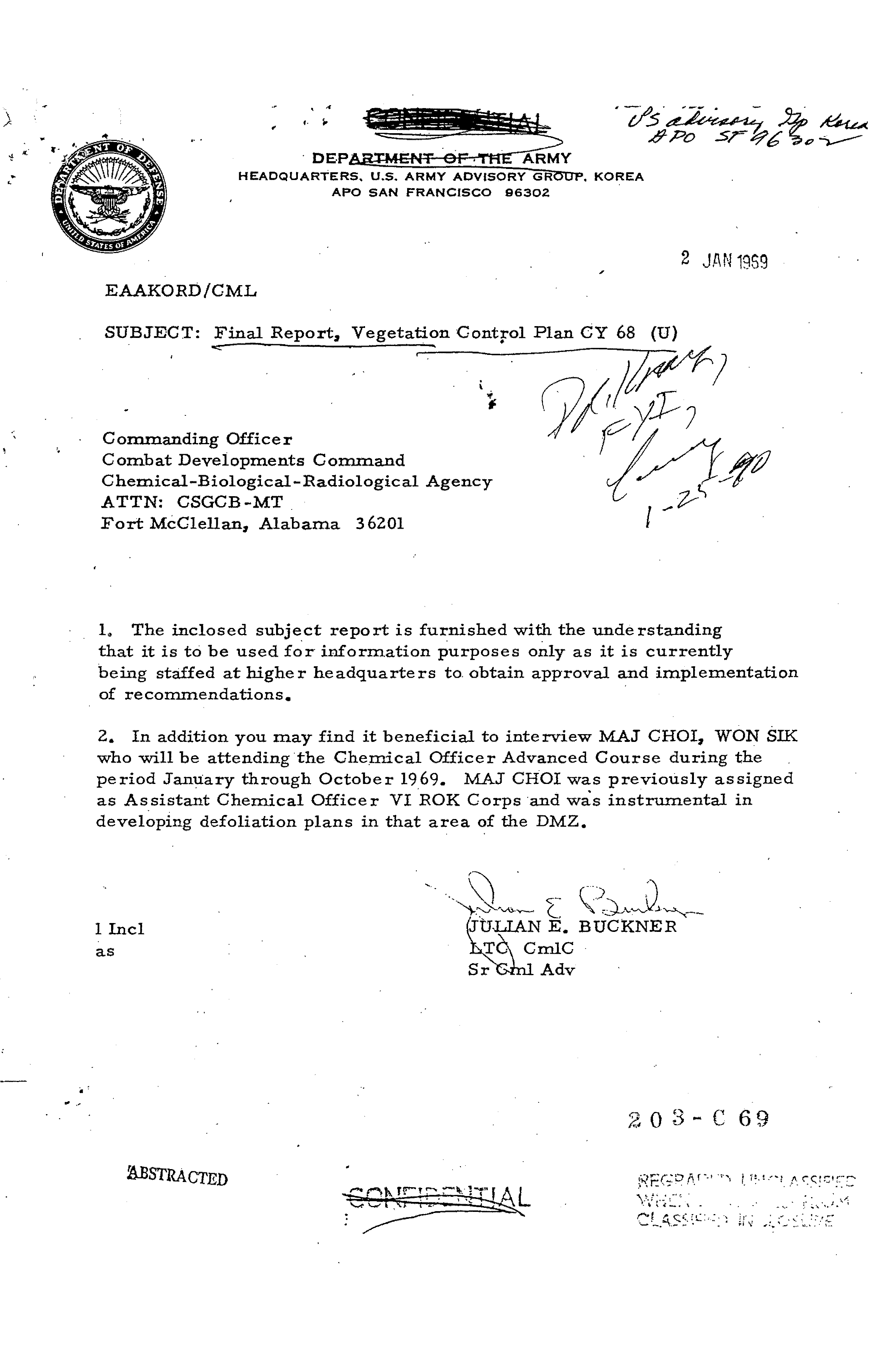
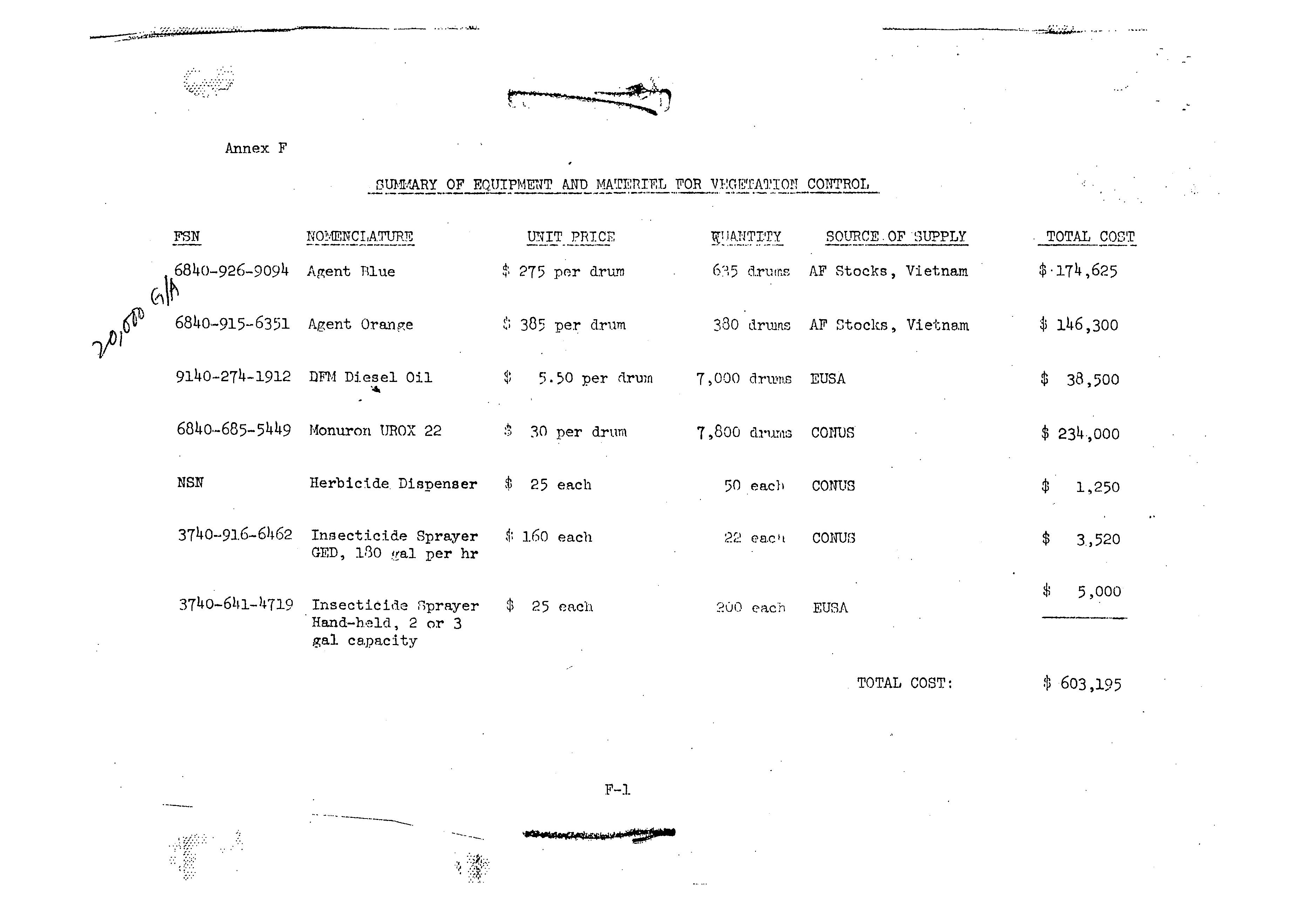
The Vegetation Control Plan CY 68 containing the information about spraying Agent Orange in the DMZ. Source: J. E. Buckner, Final Report, Vegetation Control Plan CY 68, Prepared for the Combat Developments Command (Chemical-Biological-Radiological Agency, Fort McClellan, Alabama, June 2, 1969).
The Ambivalent Legacy of Military Ecology
The DMZ has recently been under the spotlight for the “greening” of security diplomacy by local government and outside observers (Lisa Brady, “Korea’s Green Ribbon of Hope: History, Ecology, and Activism in the DMZ”). The South Korean President Moon Jae-In pledged to transform the DMZ into a “peace(ful) and cooperating district” at the United Nations General Assembly in September 2019. His proposal is another articulation of the DMZ diplomacy that his predecessors have promoted since the early 1990s: environmental cooperation and research and ecotourism within the zone are its main tactics for bringing North Korea to the table. Current environmental diplomacy counts on a particular version of the environmental conception of the DMZ that was created by military ecologists. Yet the other side of their scientific activities during the Cold War remains underrecognized. Jaehwan Hyun’s project tells us the ambivalent legacy of military ecology: while claiming natural protection of and research on the borderland, for instance, US ecologists advised its military to use Agent Orange to clear plants and trees. This project seeks to further illuminate this ambivalent nature of military environmentalism, and the place of science in the Cold War formation of militarized landscapes.
